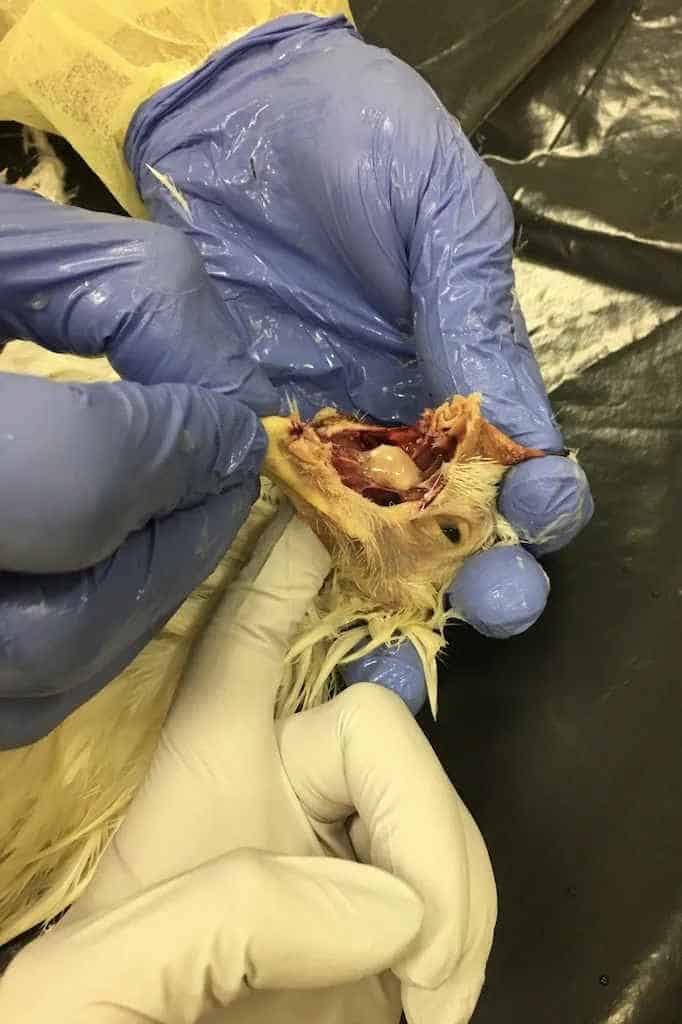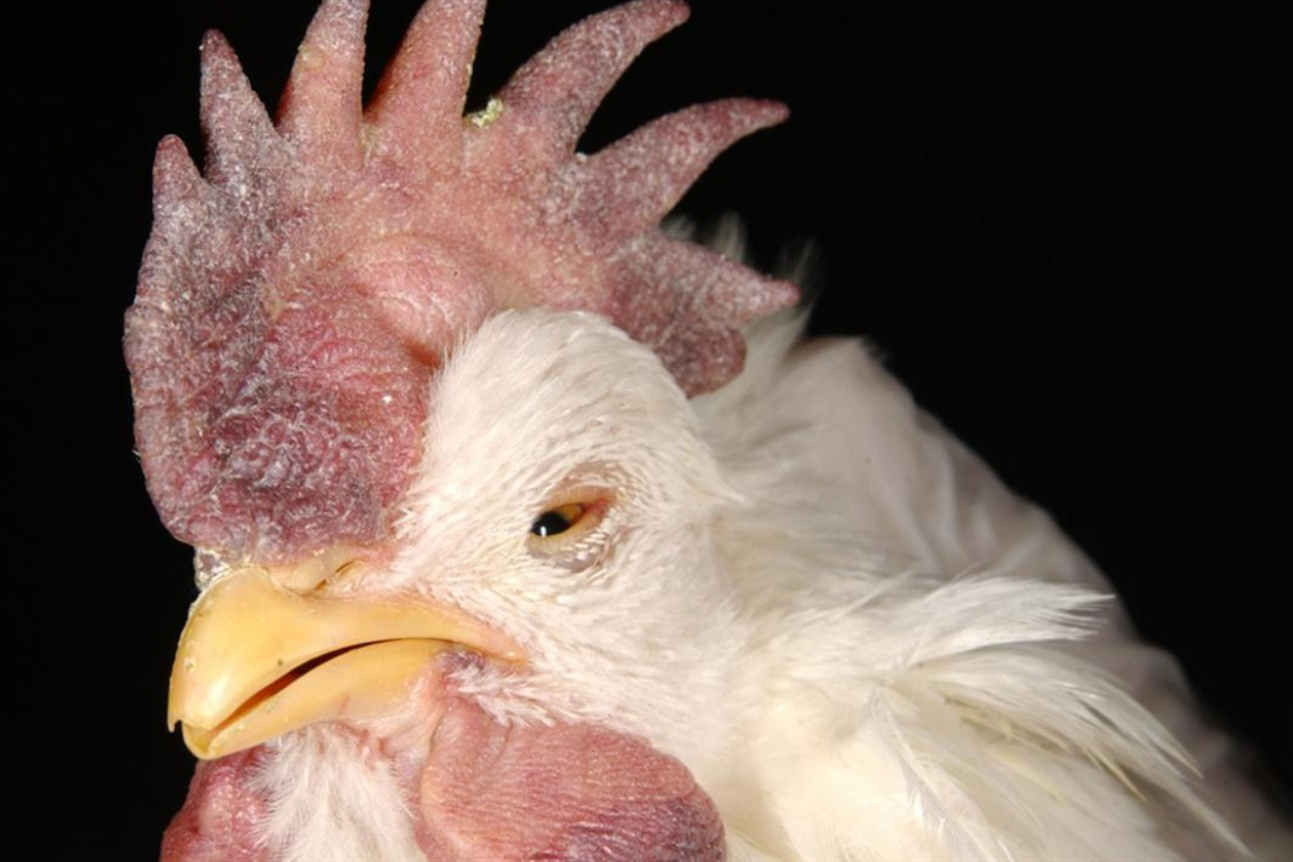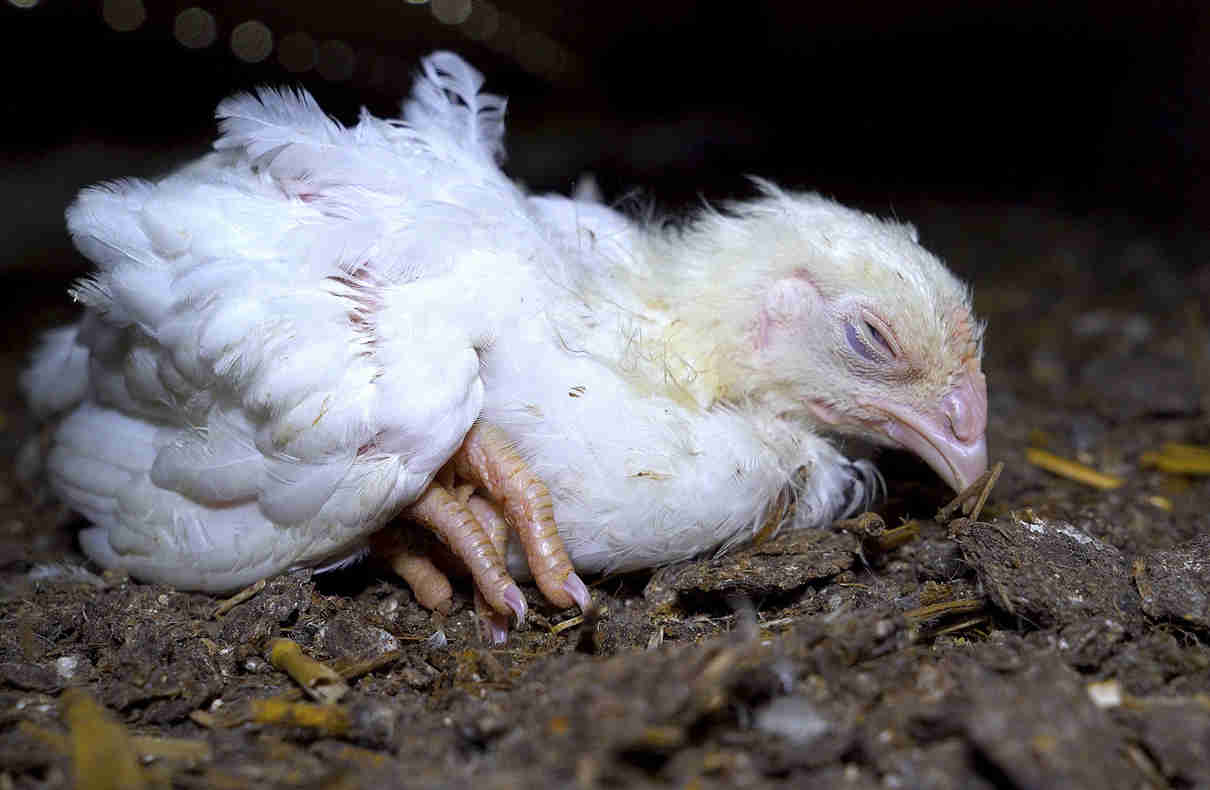Safeguarding your chickens’ health should be up there at the top of your priority list, along with providing healthy nutrition and proper shelter. But you cannot protect your feathered little friends if you don’t know what to expect.

We thought that the respiratory system (or the breathing system) was a good place to start. Ladies and gentlemen, chicken lovers of this great country, this is the chicken respiratory disease guide.
Common Chicken Respiratory Diseases
Let’s start with the common chicken respiratory diseases, the kinds that you’re more likely to stumble upon as a poultry farmer, breeder, or chicken enthusiast.
They include:
- Infectious Bronchitis (IB)
- Avian Influenza (AI)
- Newcastle Disease (ND)
So put on your surgical masks and lab coats; we’re going in:
1. Infectious Bronchitis (IB)

Infectious Bronchitis (or IB) is a nasty and highly contagious viral disease. Your birdie gets IB when the Avian Coronavirus, which causes the disease known as Infectious Bronchitis, attacks the bronchial tubes; hence the very creative name, Infectious Bronchitis. And yes, chickens have their own version of the Coronavirus.
The virus is highly contagious, spreading from one bird to the next. It is especially bad when you have a large flock, as the virus spreads fast. Poor chickens, they cannot wear masks.
Signs and Symptoms
Conjunctivitis (an inflammation of the eye) coupled with nasal discharge are the main signs of Infectious Bronchitis. It doesn’t take long for the virus to manifest. A few days after infection, you can hear your chickens coughing and struggling to breathe. The poor birds also emit a lot of mucus and suffer from running noses.
Occurrence
There’s no running away from Infectious Bronchitis, as the Avian Coronavirus is present worldwide. The virus also doesn’t discriminate, infecting chickens of all breeds and ages.
Diagnosis
How do you know your chickens got Infectious Bronchitis? The clinical signs will tell you. As mentioned earlier, red flags to look out for include coughing, running noses, and difficulty in breathing. The problem is that there are many chicken diseases with similar signs.
So we have to involve lab tests to confirm our hunch. Reach out to your poultry vet if you suspect IB. They’ll take swabs and samples of the kidney tissues.
Treatment
Unfortunately, there’s no known treatment for Infectious Bronchitis. Even antibiotics are powerless against the Avain Coronavirus. But there are things you can do to prevent or control IB.
Prevention and Control Measures
Below are effective prevention and containment strategies:
- Vaccination: Yes, there’s a vaccine for the Avian Coronavirus. But consult with your animal health professional to determine the best time and method for administering the Infectious Bronchitis vaccine.
- Supportive Care: once the birds fall ill, there’s nothing much you can do in terms of treatment. But you can make their lives a tiny bit better. Propper ventilation will help your feathered friends breathe a little better. Adjusting temperature and humidity levels can also help open up those stuffed breathing pipes.
- Reduce the Chances of Secondary Infections: IB opens the door to many opportunistic bacteria that cause all kinds of diseases.
Avian Influenza (AI)

AI, no, not artificial intelligence but rather Avian Influenza. Oh, it also goes by another alias, “Bird Flu.” Anyway, it’s a nasty viral infection that attacks the respiratory system of domesticated and wild birds. Avian Influenza is caused by the various strains of the Influenza A Virus.
Types and Strains of the Influenza A Virus
As I said a few words ago, there are multiple varieties of the Influenza A Virus. These strains are classified depending on the proteins on the surface of the virus; Neuraminidase (N) and Hemagglutinin (H). That’s why the strains take forms like H5N1 and H7N9. The H7N9 strain is also virulent to us humans.
Signs and Symptoms
The symptoms of Avian influenza vary with the virus instigating the disease. But common signs and symptoms include:
- Sudden death with no signs of illness
- Severe respiratory distress, including coughing, nasal discharge, and sneezing
- off-color wattles and combs
- A drop in egg production
- Head tremors, neck twisting, and paralysis
Diagnosis and Treatment
Identifying AI infections includes a combination of clinical evaluation and lab tests, including virus isolation. Chicken pathologists will take samples from the dead bird’s breathing pipes and cloaca.
Regarding treatment, there’s no specific cure for AI. The common preventive measure is to cull the affected birds to contain the spread.
Prevention and Control
There are multiple strategies that can help prevent and contain the spread of AI. Below are just but a few of them:
- Biosecurity Measures: Poultry farms can prevent the spread of AI by implementing strict biosecurity measures. That means restricting the access of visitors to birds, properly disposing of carcasses, and keeping high standards of cleanliness around the poultry farm.
- Vaccination: There are different vaccines available for AI. Again, these are administered depending on the AI strain that is running rampant in your area.
- Surveillance: Active surveillance is crucial to detecting infections before they spread.
- Quarantine: Implementing quarantine can save your precious birds during an outbreak.
- Public Education: Teaching your people how to handle sick birds could just contain the spread of the disease.
And it is very important that you stay ahead of any updates about Avian Influenza outbreaks. So, follow the guidelines provided by your local health and agricultural agencies; protect your bird before Influenza A viruses knock on your doors.
Newcastle Disease (ND)
Like many respiratory diseases on our list, Newcastle Disease goes by multiple names. The most common is Avian Paramyxovirus type 1 (or APMV-1). It is a highly contagious disease instigated by the creatively-named Newcastle Disease Virus (NDV).
Newcastle Disease, caused by the Newcastle Disease Virus from the Paramyxoviridae family, presents in many strains. They include:
- Lentogenic Strain: Usually low in virulence and affects the lungs and intestines of our poor little birds. Many ND vaccines contain a weak form of this strain.
- Mesogenic Strain: This type steps up the heat in terms of virulence. It wreaks havoc on both the respiratory and nervous systems. Death rates are fair.
- Velogenic Strains: There are two strains in this category; Velogenic Viscerotropic Newcastle Disease (or VVND) and Velogenic Neurotropic Newcastle Disease (VND). The VVND strain is highly virulent, attacking the lungs and stomach. Mortality rates are pretty high. The VND strain attacks the nerves, also with a high chance of death.

Signs and Symptoms
As I’ve mentioned before, the different strains of Newcastle Disease (ND) attack the respiratory, digestive, and nervous systems. And depending on where they attack, they show different clinical signs.
Respiratory Signs of the Newcastle Disease
- Coughing
- Sneezing
- Nasal discharge
- Difficulty in breathing
Digestive Signs of the Newcastle Disease
- Diarrhea
- Reduced appetite
- Greenish feces
Nervous Signs of the Newcastle Disease
- Twisted neck
- Paralysis
- Incoordination
- Tremors
General Signs of the Newcastle Disease
- Reduced egg production
- Swollen face and neck
- Depression
- Death (in severe cases)
Diagnosis and Treatment
Clinical signs are enough to suspect the disease, but the confirmation comes through lab tests by isolating the Newcastle Disease Virus. There’s no specific treatment for the affliction. But supportive care can help prolong the life of an affected bird.
So, give proper nutrition and hydration, and for the love of our birds, separate the affected birds from the rest of the flock.
Antibiotics can be effective in treating secondary infections.
Prevention and Control
Below are effective measures that can help you prevent and control the spread of Newcastle Disease among your flock:
- Vaccination: This technique is effective in preventing infection. Vaccines are available against many strains of the disease and are offered to chicks.
- Strict Biosecurity: Very effective against the spread of Newcastle Disease. It involves restricting access to your flock.
- Surveillance: This is effective for identifying cases as soon as they start to appear in your flock. Early detection helps you curb the spread of the disease.
- Quarantine: Infected birds must be quarantined to protect the rest of the flock.
Other Respiratory Diseases in Chickens
Below are other less common but equally important chicken respiratory diseases.
Infectious Coryza
-
- Cause: Avibacterium paragallinarum
- Symptoms:
- Swollen face/wattles
- Nasal discharge
- Sneezing
- Coughing
- Decreased appetite
- Decreased egg production
- Conjunctivitis
- Difficulty breathing
- Diagnosis & Treatment:
- Clinical signs
- Lab tests
- Antibiotics
- Prevention & Control Measures:
- Biosecurity
- Quarantine
- Vaccination
Infectious Laryngotracheitis (ILT)
-
- Cause: Gallid herpesvirus (GaHV-1)
- Symptoms:
- Coughing
- Sneezing
- Nasal discharge
- Conjunctivitis
- Swollen face
- Difficulty in breathing
- Death
- Diagnosis & Treatment:
- Clinical signs
- Lab tests
- Prevention & Control Measures:
- Vaccination
- Biosecurity
- Quarantine
- Hygiene
Mycoplasma gallisepticum (MG)
-
- Cause: Mycoplasma gallisepticum
- Symptoms:
- Coughing
- Sneezing
- Nasal discharge
- Swollen sinuses
- Decreased egg production
- Conjunctivitis
- Diagnosis & Treatment:
- Clinical signs
- Lab tests
- Antimicrobials
- Tetracyclines
- Macrolides
- Tylosin
- Erythromycin
- Prevention & Control Measures:
- Vaccination
- Biosecurity
- Testing and monitoring
Conclusion
These are some of the common respiratory diseases that affect chickens. As we’ve discussed, respiratory diseases are those that wreak havoc on the lungs and breathing systems of our feathered little friends. And because they affect the respiratory system, their symptoms are lung-related. You’ll see signs like sneezing and coughing, running noses, and sometimes, difficulty in breathing.
Some of these diseases are highly contagious (like Infectious Bronchitis), and the survival of your birds depends on how fast you detect infection. Always keep your birds under surveillance. Whenever you notice any of the symptoms we’ve discussed, isolate the affected birds and consult with a professional.
Respiratory diseases can lead to a drop in egg production or, even worse, wipe out many of your beloved birds. Take heed and pay attention to your birds.

Joseph Hudson has been raising chickens for over 15 years. In 2018, he completed the Agriculture & Natural Resources program at Mt. San Antonio College. He currently raises over 1400 chickens on his 7.5-hectare farm. He keeps sharing his experience on raising healthy and happy chickens on Chicken Scratch The Foundry.








Thank you so much for such a lovely article with informative content. Hope to see more of a similar article.
Do French hybrid chickens do better for beginners and how do you worm chickens .
Thank you